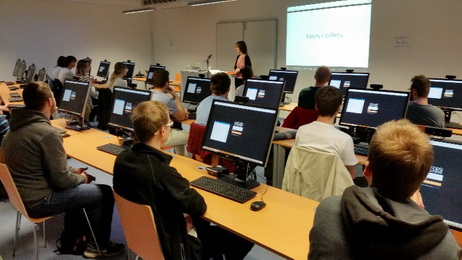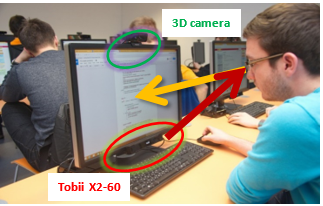|
Evaluation of user explicit feedback based on his implicit feedback measurement Metod Rybár Master thesis project supervised by prof. Mária Bieliková |
Motivation
Research has shown to us, that people are lying often, at least once a day. These lies occur not only when dealing with other humans but also when interacting with systems like questionnaires. Lot of questionnaires nowadays are performed online and the results of the questionnaires shall be accurate. Therefore we need to make sure, that the answers are truthful.
Today we deal with issue of non honest answers most often via questioning more people than necessary which should “smooth out” our results in a way, that if in our test group there are some objects that are not honest, quantity of honest subjects will have stronger effect on results.
This has however its downsides. First of all, we need more subjects than necessary and acquiring subjects is often not easy and not cheap. Second of all, if the questions are very personal or emotional, more of our subjects may choose to be not honest. In that case, even more test subjects does not help us.
If we could differentiate honest answers from non honest automatically, we could reduce number of subjects required and also be able to choose only honest answers for our purposes. To do this, we can focus on implicit feedback from subjects such as eye movements or response times that can serve as indicators for non honest answers.
Evaluation
We have performed several smaller and two major experiments at UX group lab at the Research Centre of User Experience and Interaction at FIIT STU Bratislava with more than 120 subjects altogether. UX group lab at the Research Centre of User Experience and Interaction at FIIT STU Bratislava
UX group lab at the Research Centre of User Experience and Interaction at FIIT STU Bratislava
 Equipment used for experiment
Equipment used for experiment
Publications
- Rybár, Metod
- Evaluation of user explicit feedback based on his implicit feedback measurement. Master thesis, Slovak University of Technology in Bratislava, May 2016.
 pdf (in Slovak)
pdf (in Slovak)
- Rybár, Metod, Bieliková, Mária
- Automated Detection of User Deception in On-line Questionnaires with Focus on Eye Tracking Use. In SMAP 2016. Proceedings of the 11th International Workshop on Semantic and Social Media Adaptation and Personalization, IEEE, 2016, pp. 24-28.
 pdf
pdf
| to Homepage | to Teaching | to the Top |
|
|
|
|
|
|
|
|
|
|
|
|
|
|
|
|
|
|
|
|
|
|
||
|
||